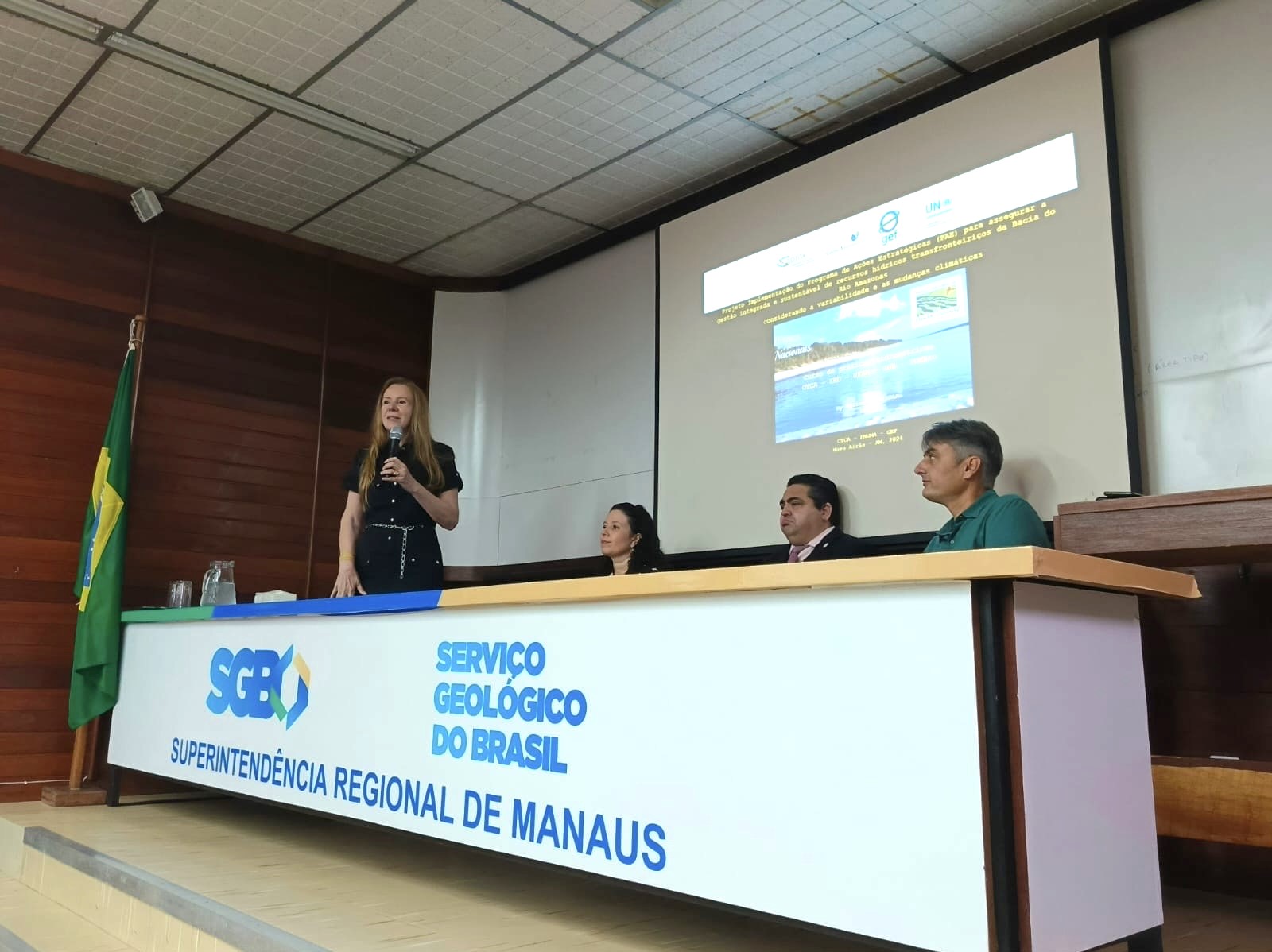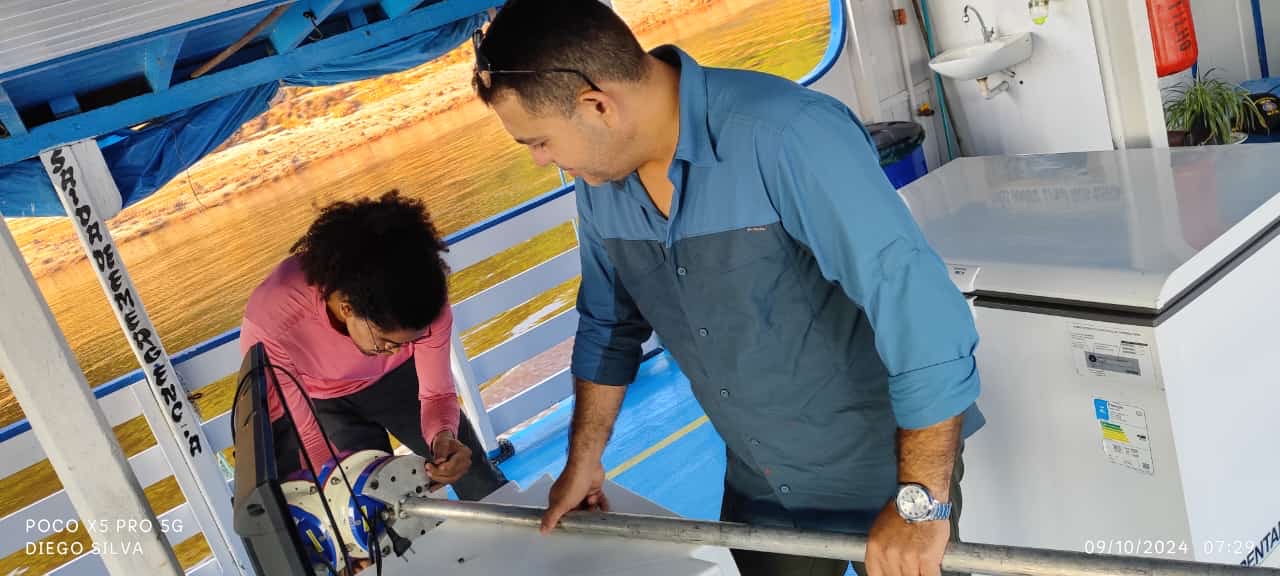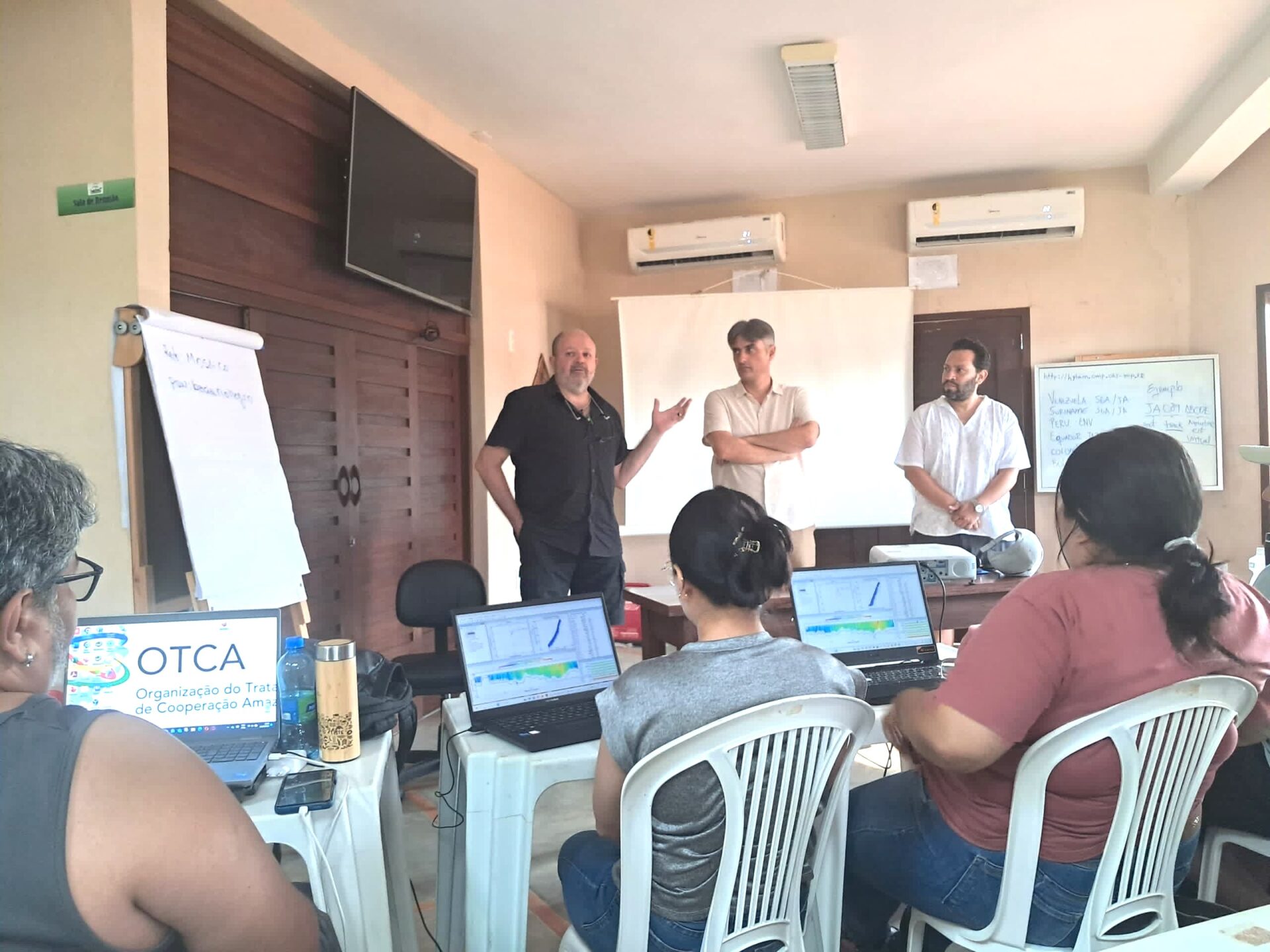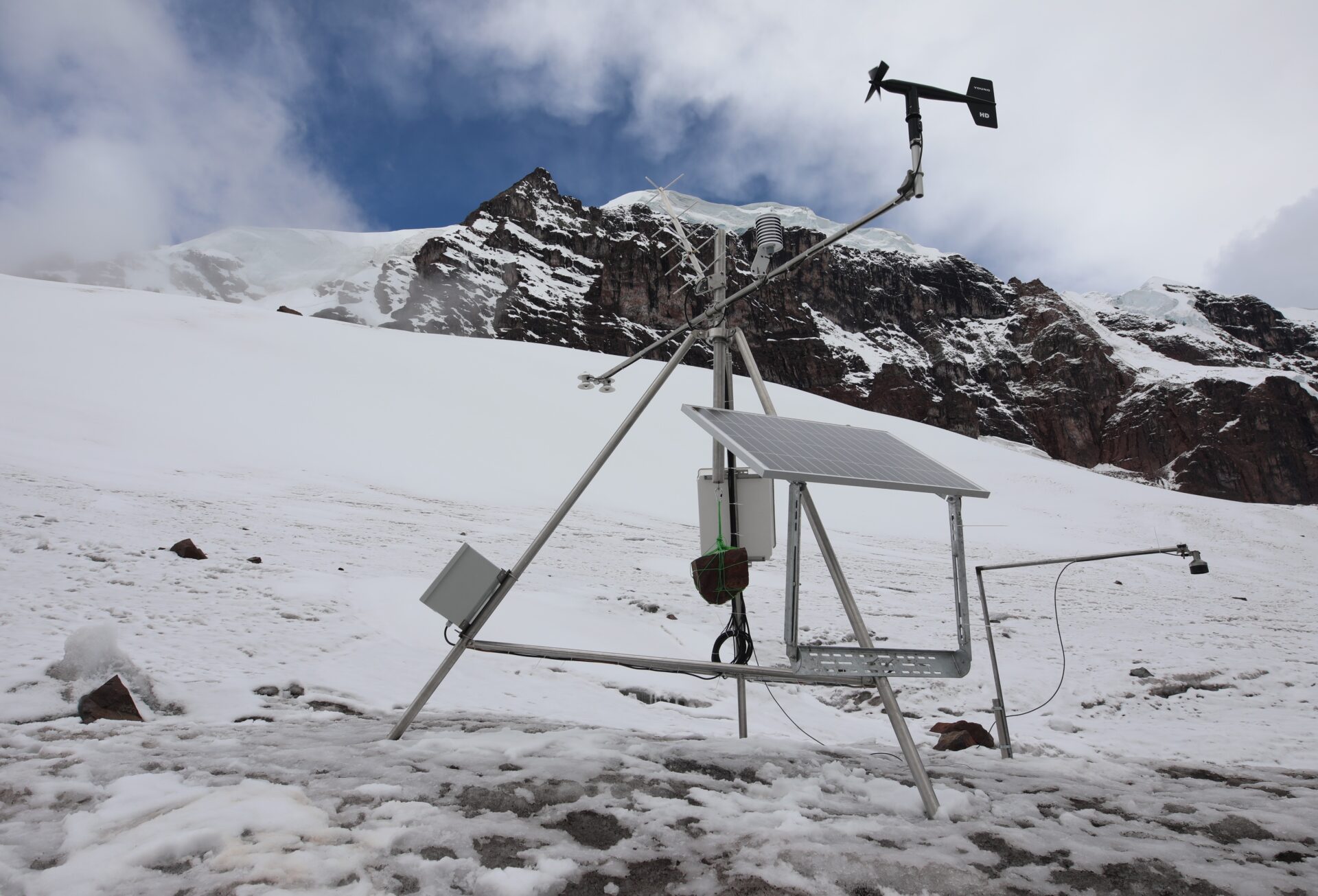Index
Topics
Share
A group of 20 technical professionals from institutions responsible for hydrological monitoring in Amazonian countries participated in the Amazon Hydrology Course, organized by the Amazon Basin Project (ACTO/UNEP/GEF) from October 7 to 13 in Novo Airão, a city in the Brazilian Amazon. This initiative, in partnership with the French Research and Development Institute (IRD), the Geosciences Department of the Federal University of Amazonas (UFAM), and the Superintendency of the Geological Service of Brazil (SGB), aimed to level competencies to support the operation of the Amazon Hydrological Network (AHN), which operates within the Amazon Regional Observatory (ARO) of the Amazon Cooperation Treaty Organization (ACTO). The course addressed hydrological topics such as monitoring river and reservoir levels and flows, building models, and observing flow variability using satellite data.
During the opening ceremony in Manaus (Brazil), ACTO’s Interim Secretary-General Vanessa Grazziotin, UFAM’s rector Sylvio Puga, IRD’s acting representative in Brazil Jean Michel Martinez, and the Superintendent of the Geological Service of Brazil Jussara Maciel emphasized the importance of building technical capacity in Amazonian countries to enable decision-making and strategic planning. These efforts aim to strengthen Integrated Water Resources Management (IWRM) and mitigate climate change impacts in the Amazon region.
- Interim ACTO Secretary General Vanessa Grazziotin speaks at the opening of the event in Manaus.
- The rector of UFAM, Sylvio Puga, delivers his speech at the opening of the event.
In her opening remarks, Vanessa Grazziotin stated that the Amazon Hydrology Course is the first in a series of training sessions outlined in ANWA’s Work Plan, the Amazon Water Authorities Network. “ANWA was created by the presidents of Amazonian countries during the Amazon Summit [held in 2023 in Belém, Brazil] to advance the shared management of the Amazon Basin’s water resources. Its activities, driven by the Amazon Basin Project – Implementation of the Strategic Actions Program (SAP), include the Training Plan for Integrated Water Management, which we launch today with this Amazon Hydrology Course,” she said.
Tool learning
With an intensive schedule that included fieldwork, the Amazon Hydrology Course trained professionals in using hydrological tools to enhance the operation of the Amazon Hydrological Network (AHN). The training focused on improving data collection quality. Fieldwork took place at rainfall and river gauging stations in Novo Airão, a city on the banks of the Rio Negro, the largest tributary on the Amazon River’s left bank.
The group of trained professionals were updated on the use of ADCP (Acoustic Doppler Current Profiler) technology, an advanced method of measuring the flow of rivers and reservoirs, which obtains more reliable data than mechanical measurement. William Santini, a professor at IRD in Bolivia, demonstrated how mathematical software integrated with ADCP allows highly accurate water flow measurement, in addition to providing detailed information on river behavior, such as flow line directions in various stretches.
- Practical class on the use of ADCP Technology.
- Students practicing the use of ADCP technology on the Negro River.
On another occasion, the professionals learnt about the BaRatin Method, a new approach used in hydrological monitoring to estimate the key curve of rivers, that is, the relation between water level and flow, essential information for predicting droughts and floods.
The participants also received training on satellite-based hydrological monitoring, a technique that enables near real-time data acquisition and expands monitoring capabilities in remote areas. Although this technique has been underutilized by Amazonian countries, its integration at a national level could significantly enhance hydrological monitoring at lower financial and human costs.
“What we learned in this course is highly applicable and essential for integrated water management in Amazonian countries, as it allows us to communicate using a unified hydrological language and operate under standardized monitoring protocols,” said Carlos Henrique Millan Arancibia, a specialist in the Subdirectorate of Hydrological Studies and Research at Peru’s Meteorological and Hydrological Service.
“I leave this course with the mission of implementing the techniques I learned in my country. I also feel motivated to share this knowledge through lectures for researchers and field professionals,” stated Hector Fuenmayor García, Hydrology Manager at Venezuela’s National Meteorology Institute.
Sharing experiences and information
The Amazon Hydrology Course was also an opportunity for the professionals, who were there as representatives of the institutions responsible for hydrological monitoring in the countries, to explain to the group how the national systems work, especially with regard to obtaining and measuring data and the use of technology. They discussed data acquisition and verification processes and technology use. This exchange of experiences and information is fundamental for advancing IWRM in the Amazon and allowed participants to deepen their understanding of operational realities in hydrology, particularly regarding station networks and operational procedures in each country.
“Gaining deeper access to information on technical practices at the hydrometric stations maintained by Amazonian countries is crucial for developing an accurate diagnostic of the current state of hydrological monitoring in the region. The data we gathered during the course, highlighting differences and similarities between countries, will be invaluable for developing the Regional Integrated Information Platform on IWRM in the Amazon Basin,” said geologist Naziano Filizola, one of the course coordinators and the specialist responsible for creating the platform as part of the Amazon Basin Project.
The Integrated Regional Information Platform on IWRM in the Amazon Basin will make available data from the Integrated Water Resources Monitoring System, which is also being developed by the Amazon Basin Project, and will operate connected to the Amazon Regional Observatory – ORA, the ACTO’s Reference Centre for Information on the Amazon.
The Amazon Hydrology Course also presented ACTO’s proposals for establishing common protocols for the Amazon Hydrological Network (AHN). Once reviewed and approved by the Amazon Water Authorities Network (ANWA), these protocols will help countries modernize and strengthen their monitoring systems, ensuring standardized operational processes and enabling more harmonious and integrated data analysis.
- Classroom in Novo Airão.
- Participation certificates handed out.
Related news
Post
27 de November de 2025
Four glaciological, meteorological, and hydrometric monitoring stations have been installed in the Vilcanota and Carabaya mountain ranges in southern Peru [...]
Post
3 de November de 2025
The Amazon Cooperation Treaty Organization (ACTO) announces a call for specialized technical services to update the Atlas of Hydroclimatic Vulnerability [...]
Post
21 de August de 2025
Developed under the Amazon Basin Project – Implementation of the Strategic Action Program (SAP), the Toolbox for Water Management in [...]










